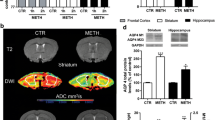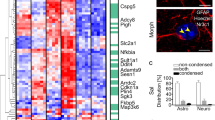Abstract
The water channel aquaporin 4 (AQP4) is abundantly expressed in astrocytes and provides a mechanism by which water permeability of the plasma membrane can be regulated. Evidence suggests that AQP4 is associated with glutamate transporter-1 (GLT-1) for glutamate clearance and contributes to morphine dependence. Previous studies show that AQP4 deficiency changed the mu opioid receptor expression and opioid receptors’ characteristics as well. In this study, we focused on whether AQP4 could form macromolecular complex with GLT-1 and mu opioid receptor (MOR) and participates in morphine dependence. By using immunofluorescence staining, fluorescence resonance energy transfer, and co-immunoprecipitation, we demonstrated that AQP4 forms protein complexes with GLT-1 and MOR in both brain tissue and primary cultured astrocytes. We then showed that the C-terminus of AQP4 containing the amino acid residues 252 to 323 is the site of interaction with GLT-1. Protein kinase C, activated by morphine, played an important role in regulating the expression of these proteins. These findings may help to reveal the mechanism that AQP4, GLT-1, and MOR form protein complex and participate in morphine dependence, and deeply understand the reason that AQP4 deficiency maintains extracellular glutamate homeostasis and attenuates morphine dependence, moreover emphasizes the function of astrocyte in morphine dependence.





Similar content being viewed by others
Abbreviations
- AQP4:
-
Aquaporin 4
- GLT-1:
-
Glutamate transporter-1
- FRET:
-
Fluorescence resonance energy transfer
- Co-IP:
-
Co-immunoprecipitation
- PKC:
-
Protein kinase C
- PKA:
-
Protein kinase A
- GFAP:
-
Glial fibrillary acidic protein
- IHF:
-
Immunohistofluorescence
- ICF:
-
Immunocytofluorescent
- CNS:
-
Central nervous system
- dBcAMP:
-
Dibubyryl cAMP
- PMA:
-
Phorbol-12-myristate-13-acetate
References
Aoyama M, Kakita H, Kato S, Tomita M, Asai K (2012) Region-specific expression of a water channel protein, aquaporin 4, on brain astrocytes. J Neurosci Res 90(12):2272–2280. doi:10.1002/jnr.23117
Belcheva MM, Tan Y, Heaton VM, Clark AL, Coscia CJ (2003) Mu opioid transactivation and down-regulation of the epidermal growth factor receptor in astrocytes: implications for mitogen-activated protein kinase signaling. Mol Pharmacol 64(6):1391–1401. doi:10.1124/mol.64.6.1391
Carmosino M, Procino G, Tamma G, Mannucci R, Svelto M, Valenti G (2007) Trafficking and phosphorylation dynamics of AQP4 in histamine-treated human gastric cells. Biol Cell 99(1):25–36. doi:10.1042/BC20060068
Chen ML, Bao F, Zhang YQ, Zhao ZQ (2010) Effects of aquaporin 4 deficiency on morphine analgesia and chronic tolerance: a study at spinal level. J Mol Neurosci 42(2):140–144. doi:10.1007/s12031-010-9356-7
Chen ML, Bao F, Zhang YQ, Zhao ZQ (2012) Effects of aquaporin 4 deficiency on the expression of spinal PKCalpha, PKCgamma and c-Fos in naloxone-precipitated morphine withdrawal mice. Sheng Li Xue Bao 64(4):365–371
Crane JM, Verkman AS (2009) Determinants of aquaporin-4 assembly in orthogonal arrays revealed by live-cell single-molecule fluorescence imaging. J Cell Sci 122(Pt 6):813–821. doi:10.1242/jcs.042341
Danbolt NC (2001) Glutamate uptake. Prog Neurobiol 65(1):1–105
Danbolt NC, Storm-Mathisen J, Kanner BI (1992) An [Na+ + K+]coupled L-glutamate transporter purified from rat brain is located in glial cell processes. Neuroscience 51(2):295–310
Duraffourd C, Kumala E, Anselmi L, Brecha NC, Sternini C (2014) Opioid-induced mitogen-activated protein kinase signaling in rat enteric neurons following chronic morphine treatment. PLoS One 9(10):e110230. doi:10.1371/journal.pone.0110230
Gabra BH, Bailey CP, Kelly E, Sanders AV, Henderson G, Smith FL, Dewey WL (2007) Evidence for an important role of protein phosphatases in the mechanism of morphine tolerance. Brain Res 1159:86–93. doi:10.1016/j.brainres.2007.05.017
Gabra BH, Bailey CP, Kelly E, Smith FL, Henderson G, Dewey WL (2008) Pre-treatment with a PKC or PKA inhibitor prevents the development of morphine tolerance but not physical dependence in mice. Brain Res 1217:70–77. doi:10.1016/j.brainres.2008.04.036
Gonzalez MI, Susarla BT, Robinson MB (2005) Evidence that protein kinase Calpha interacts with and regulates the glial glutamate transporter GLT-1. J Neurochem 94(5):1180–1188. doi:10.1111/j.1471-4159.2005.03330.x
Gunnarson E, Zelenina M, Aperia A (2004) Regulation of brain aquaporins. Neuroscience 129(4):947–955. doi:10.1016/j.neuroscience.2004.08.022
Hasegawa H, Ma T, Skach W, Matthay MA, Verkman AS (1994) Molecular cloning of a mercurial-insensitive water channel expressed in selected water-transporting tissues. J Biol Chem 269(8):5497–5500
Hayashi MK, Yasui M (2015) The transmembrane transporter domain of glutamate transporters is a process tip localizer. Sci Rep 5:9032. doi:10.1038/srep09032
Hinson SR, Roemer SF, Lucchinetti CF, Fryer JP, Kryzer TJ, Chamberlain JL et al (2008) Aquaporin-4-binding autoantibodies in patients with neuromyelitis optica impair glutamate transport by down-regulating EAAT2. J Exp Med 205(11):2473–2481. doi:10.1084/jem.20081241
Hsu Y, Tran M, Linninger AA (2015) Dynamic regulation of aquaporin-4 water channels in neurological disorders. Croat Med J 56(5):401–421
Iliff JJ, Wang M, Liao Y, Plogg BA, Peng W, Gundersen GA et al (2012) A paravascular pathway facilitates CSF flow through the brain parenchyma and the clearance of interstitial solutes, including amyloid beta. Sci Transl Med 4(147):147ra111. doi:10.1126/scitranslmed.3003748
Illarionova NB, Brismar H, Aperia A, Gunnarson E (2014) Role of Na,K-ATPase alpha1 and alpha2 isoforms in the support of astrocyte glutamate uptake. PLoS One 9(6):e98469. doi:10.1371/journal.pone.0098469
Illarionova NB, Gunnarson, E, Li, Y, Brismar, H, Bondar, A, Zelenin, S, & Aperia, A. (2010). Functional and molecular interactions between aquaporins and Na,K-ATPase. Neuroscience, 168(4), 915-925. doi:10.1016/j.neuroscience.2009.11.062
Jukkola P, Gu C (2015) Regulation of neurovascular coupling in autoimmunity to water and ion channels. Autoimmun Rev 14(3):258–267. doi:10.1016/j.autrev.2014.11.010
Kitchen P, Day RE, Taylor LH, Salman MM, Bill RM, Conner MT, Conner AC (2015) Identification and molecular mechanisms of the rapid tonicity-induced relocalization of aquaporin 4. J Biol Chem. doi:10.1074/jbc.M115.646034
Kong H, Zeng XN, Fan Y, Yuan ST, Ge S, Xie WP et al (2014) Aquaporin-4 knockout exacerbates corticosterone-induced depression by inhibiting astrocyte function and hippocampal neurogenesis. CNS Neurosci Ther 20(5):391–402. doi:10.1111/cns.12222
Lan YL, Zhao J, Ma T, Li S (2015) The potential roles of aquaporin 4 in Alzheimer’s disease. Mol Neurobiol. doi:10.1007/s12035-015-9446-1
Mao J, Sung B, Ji RR, Lim G (2002) Chronic morphine induces downregulation of spinal glutamate transporters: implications in morphine tolerance and abnormal pain sensitivity. J Neurosci 22(18):8312–8323
Mystek P, Tworzydlo M, Dziedzicka-Wasylewska M, Polit A (2015) New insights into the model of dopamine D1 receptor and G-proteins interactions. Biochim Biophys Acta 1854(3):594–603. doi:10.1016/j.bbamcr.2014.12.015
Nagelhus EA, Mathiisen TM, Ottersen OP (2004) Aquaporin-4 in the central nervous system: cellular and subcellular distribution and coexpression with KIR4.1. Neuroscience 129(4):905–913. doi:10.1016/j.neuroscience.2004.08.053
Nakagawa T, Ozawa T, Shige K, Yamamoto R, Minami M, Satoh M (2001) Inhibition of morphine tolerance and dependence by MS-153, a glutamate transporter activator. Eur J Pharmacol 419(1):39–45
Nakahama K, Fujioka A, Nagano M, Satoh S, Furukawa K, Sasaki H, Shigeyoshi Y (2002) A role of the C-terminus of aquaporin 4 in its membrane expression in cultured astrocytes. Genes Cells 7(7):731–741
Nicol B, Rowbotham DJ, Lambert DG (1996) Mu- and kappa-opioids inhibit K+ evoked glutamate release from rat cerebrocortical slices. Neurosci Lett 218(2):79–82
Nielsen S, Nagelhus EA, Amiry-Moghaddam M, Bourque C, Agre P, Ottersen OP (1997) Specialized membrane domains for water transport in glial cells: high-resolution immunogold cytochemistry of aquaporin-4 in rat brain. J Neurosci 17(1):171–180
Papadopoulos MC, Manley GT, Krishna S, Verkman AS (2004) Aquaporin-4 facilitates reabsorption of excess fluid in vasogenic brain edema. FASEB J 18(11):1291–1293. doi:10.1096/fj.04-1723fje
Papadopoulos MC, Verkman AS (2013) Aquaporin water channels in the nervous system. Nat Rev Neurosci 14(4):265–277. doi:10.1038/nrn3468
Phamduong E, Rathore MK, Crews NR, D’Angelo AS, Leinweber AL, Kappera P et al (2014) Acute and chronic mu opioids differentially regulate thrombospondins 1 and 2 isoforms in astrocytes. ACS Chem Neurosci 5(2):106–114. doi:10.1021/cn400172n
Rash JE, Yasumura T, Hudson CS, Agre P, Nielsen S (1998) Direct immunogold labeling of aquaporin-4 in square arrays of astrocyte and ependymocyte plasma membranes in rat brain and spinal cord. Proc Natl Acad Sci U S A 95(20):11981–11986
Robinson MB (1998) The family of sodium-dependent glutamate transporters: a focus on the GLT-1/EAAT2 subtype. Neurochem Int 33(6):479–491
Solenov E, Watanabe H, Manley GT, Verkman AS (2004) Sevenfold-reduced osmotic water permeability in primary astrocyte cultures from AQP-4-deficient mice, measured by a fluorescence quenching method. Am J Physiol Cell Physiol 286(2):C426–C432. doi:10.1152/ajpcell.00298.2003
Su G, Haworth RA, Dempsey RJ, Sun D (2000) Regulation of Na(+)-K(+)-Cl(−) cotransporter in primary astrocytes by dibutyryl cAMP and high [K(+)](o). Am J Physiol Cell Physiol 279(6):C1710–C1721
Swanson RA, Liu J, Miller JW, Rothstein JD, Farrell K, Stein BA, Longuemare MC (1997) Neuronal regulation of glutamate transporter subtype expression in astrocytes. J Neurosci 17(3):932–940
Ueda M, Sugimoto K, Oyama T, Kuraishi Y, Satoh M (1995) Opioidergic inhibition of capsaicin-evoked release of glutamate from rat spinal dorsal horn slices. Neuropharmacology 34(3):303–308
Venero JL, Vizuete ML, Machado A, Cano J (2001) Aquaporins in the central nervous system. Prog Neurobiol 63(3):321–336
Verkhratsky A, Nedergaard M (2014) Astroglial cradle in the life of the synapse. Philos Trans R Soc Lond Ser B Biol Sci 369(1654):20130595. doi:10.1098/rstb.2013.0595
Verkman AS (2011) Aquaporins at a glance. J Cell Sci 124(Pt 13):2107–2112. doi:10.1242/jcs.079467
Verkman AS, Anderson MO, Papadopoulos MC (2014) Aquaporins: important but elusive drug targets. Nat Rev Drug Discov 13(4):259–277. doi:10.1038/nrd4226
Wang JF, Wang ZY, Wu N, Yan HT, Li J (2009) Effects of aquaporin4 deficiency on opioid receptors characteristics in naive and chronic morphine-treated mice. Neurosci Lett 457(3):111–114. doi:10.1016/j.neulet.2009.03.060
Wang Y, Wang YX, Liu T, Law PY, Loh HH, Qiu Y, Chen HZ (2015) Mu-opioid receptor attenuates Abeta oligomers-induced neurotoxicity through mTOR signaling. CNS Neurosci Ther 21(1):8–14. doi:10.1111/cns.12316
Wang ZJ, Wang LX (2006) Phosphorylation: a molecular switch in opioid tolerance. Life Sci 79(18):1681–1691. doi:10.1016/j.lfs.2006.05.023
Wei X, Zhang B, Cheng L, Chi M, Deng L, Pan H et al (2015) Hydrogen sulfide induces neuroprotection against experimental stroke in rats by down-regulation of AQP4 via activating PKC. Brain Res. doi:10.1016/j.brainres.2015.07.001
Wu N, Lu XQ, Yan HT, Su RB, Wang JF, Liu Y et al (2008) Aquaporin 4 deficiency modulates morphine pharmacological actions. Neurosci Lett 448(2):221–225. doi:10.1016/j.neulet.2008.10.065
Xia M, Guo V, Huang R, Shahane SA, Austin CP, Nirenberg M, Sharma SK (2011) Inhibition of morphine-induced cAMP overshoot: a cell-based assay model in a high-throughput format. Cell Mol Neurobiol 31(6):901–907. doi:10.1007/s10571-011-9689-y
Xu GY, Wang F, Jiang X, Tao J (2010) Aquaporin 1, a potential therapeutic target for migraine with aura. Mol Pain 6:68. doi:10.1186/1744-8069-6-68
Yan HT, Wu N, Lu XQ, Su RB, Zheng JQ, Li J (2013) Aquaporin-4 deficiency attenuates opioid dependence through suppressing glutamate transporter-1 down-regulation and maintaining glutamate homeostasis. CNS Neurosci Ther 19(1):12–19. doi:10.1111/cns.12012
Zador Z, Bloch O, Yao X, Manley GT (2007) Aquaporins: role in cerebral edema and brain water balance. Prog Brain Res 161:185–194. doi:10.1016/S0079-6123(06)61012-1
Zeng XN, Sun XL, Gao L, Fan Y, Ding JH, Hu G (2007) Aquaporin-4 deficiency down-regulates glutamate uptake and GLT-1 expression in astrocytes. Mol Cell Neurosci 34(1):34–39. doi:10.1016/j.mcn.2006.09.008
Acknowledgements
This research was supported by grants from the National Key Technology R&D Program of China (No. 2012BAI01B07), the National Integrated Drug Discovery Technology Platform Foundation of China (No. 2012ZX09301003), and the Beijing Nature Science Foundation (No. 7132146).
Author information
Authors and Affiliations
Corresponding authors
Ethics declarations
The animals were treated in accordance with the NIH Guidelines for the Care and Use of Laboratory Animals (1996) and with the guidelines of the local ethics committee. All efforts were made to minimize animal suffering and to reduce the number of animals required.
Financial Disclosure
There is no financial disclosure and support for the current study.
Conflict of Interest
The authors declare that they have no conflict of interest.
Rights and permissions
About this article
Cite this article
Wang, H., Wang, S., Zhang, K. et al. Aquaporin 4 Forms a Macromolecular Complex with Glutamate Transporter 1 and Mu Opioid Receptor in Astrocytes and Participates in Morphine Dependence. J Mol Neurosci 62, 17–27 (2017). https://doi.org/10.1007/s12031-017-0905-1
Received:
Accepted:
Published:
Issue Date:
DOI: https://doi.org/10.1007/s12031-017-0905-1




